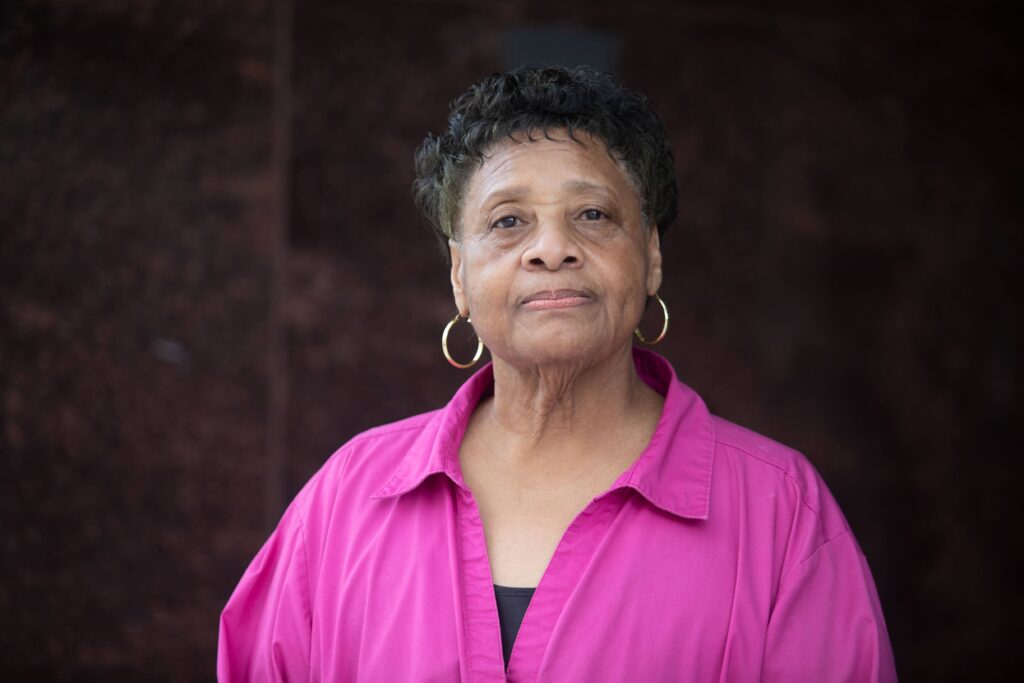For Carolyn Peters, Mossville was once the kind of place you would read about in a storybook. She remembers the pecan and fig trees that lined her street, as well as the family picnics on perfectly trimmed lawns every Fourth of July.
The seasons came in their full colors then, before the air grew heavy and the water turned dangerous. “Mossville was a beautiful place. Absolutely beautiful,” Peters recalls.
Peters is president of Concern Citizens of Mossville (CCOM), a nonprofit she helped establish in 2021. The group’s mission is straightforward: to secure a fair buyout plan for a community contaminated by industrial encroachment and toxic emissions from nearby plants, particularly Sasol’s Lake Charles Chemical Complex and Research and Development Laboratory.
“Our goal is to get out of Mossville because the last voluntary buyout that we were offered, it just wasn’t fair,” Peters said.
In 2013, Sasol spearheaded a buyout program in which they purchased 600 properties from residents of communities close to the chemical complex.
Many residents, including Peters, did not accept the previous buyout proposal as they felt that the company did not offer them a fair price for their homes.
Investigations by the University Network for Human Rights later found that Sasol’s offers to residents of Mossville, a predominantly Black community, were on average 45% lower than Sasol’s offers to residents of the neighboring area of Brentwood, a predominantly white community.
Now, CCOM is trying to get Sasol back to the negotiating table so that the remaining Mossville residents can leave a community that is a shadow of its former self, with enough money to relocate safely elsewhere.
A Community Under Siege
Founded by formerly enslaved people in the 1790s, Mossville was once a thriving, self-sufficient Black community in southwest Louisiana. Residents built homes, raised families, and passed land down through generations as a source of security and wealth.
Peters’ father bought an acre of land in Mossville in the late 1950s. “His blood, sweat, and tears went into that land, literally,” she says. This is where Peters grew up and experienced cherished memories with family as a girl.
But industry saw Mossville differently. Over the decades, chemical plants cropped up on every side of the town. Residents were left breathing toxic air and drinking contaminated water.
By the mid-1960s, Peters recalls, children were already dying. Residents attribute the deaths of two young twins to drinking well water tainted with industrial chemicals. “After that, it was like somebody lit a match,” Peters says. “All you started hearing is about death.”
The community of Mossville is now surrounded by 14 different industrial facilities. However, the encroachment of the Sasol chemical complex is the biggest concern for Mossville residents. Sasol’s encroachment has been so acute that there are chemical facilities located where Mossville Elementary School once stood. This expansion further into the community exacerbates concerns about exposure to toxic chemicals. This includes carcinogenic chemicals linked to a variety of severe and at times, fatal, health impacts.
Residents of Mossville have long reported cancers and other illnesses happening throughout their community on a significant scale. “Cancer wasn’t something we grew up with,” Peters explains. “We learned that because of the deaths.”
The Unfair Buyout
Peters recalls Sasol’s unjust approach to the buyouts. “They set up a formula, one size fits all,” Peters remembers.
“If I had a two-story, 3,000-square-foot home and you had a one-story with 1,200 square feet, we should get the same money or whatever.”
The University Network for Human Rights later found the buyout to have made former Mossville residents who had accepted worse off. But it also left residents who stayed with new problems – they were now trapped in homes they could neither sell nor live in safely. These homes were now also located beside dozens of abandoned properties that Sasol had bought over, turning their once beloved village into a deserted community.
The plot of land that belonged to Peters’ father was supposed to provide security and stability to her daughter. But now, she believes that the land is too contaminated to sell to anyone other than the polluters themselves.

“Cancer wasn’t something we grew up with,” Peters explains. “We learned that because of the deaths.”
Leading the Fight for a Just Deal
When Peters returned home to Mossville to care for her aging parents in the 1970s, she found that the place that was so special to her before looked almost unrecognizable – a paradise lost among the fumes of chemical plants and factories.
Shortly after, she joined a community fight against Sasol that resulted in a buyout. Then, she built on this legacy and established CCOM in 2021. When no one else stepped forward to lead, she became the president.
Her activism helps her to find strength during difficult times and to keep fighting even when CCOM’s goals feel out of reach. “I’m holding on to that because that’s what keeps me waking up. It keeps me getting up in the morning because I know what I gotta do.”
She is now focused on securing a dignified and fair buyout deal for those who remain in Mossville, as she knows that the decades of contamination cannot be undone. “Talk is just not gonna cut it. It’s got to be actions behind that talk and then results. That’s the bottom line,” she emphasizes. “We want results, tangible results.”
In spite of how much her community has changed, Mossville will always be Peters’ home, a sanctuary from racism of community resilience, and self-determination.
“It’s the best place in the world and nothing can compare to that,” she says, between deep breaths.






